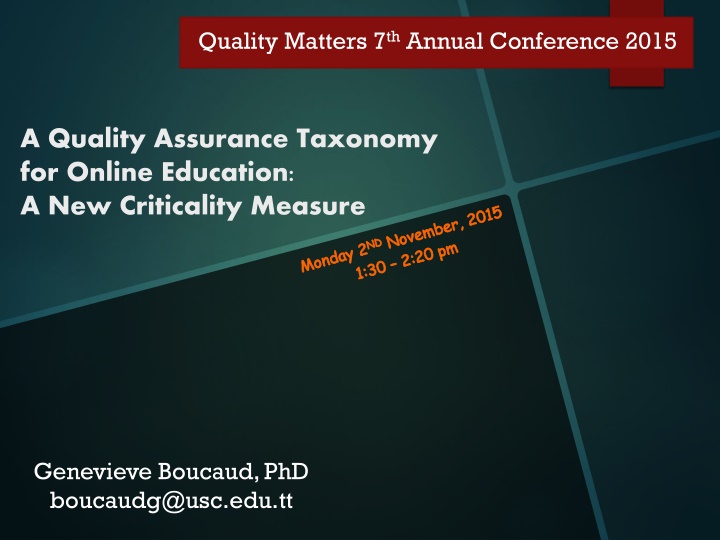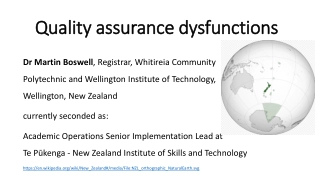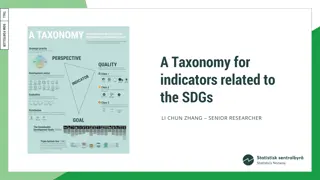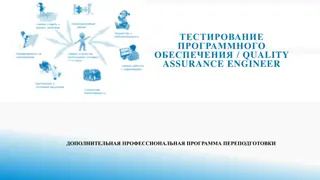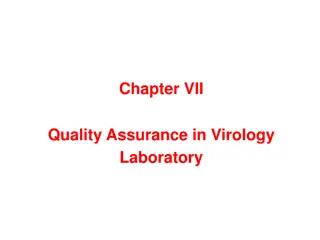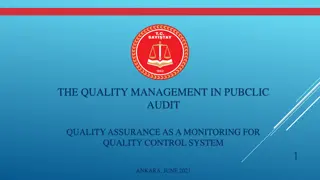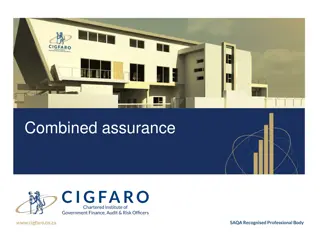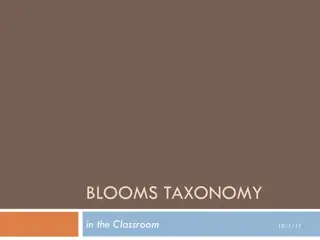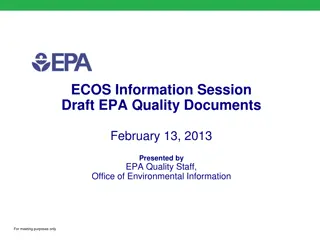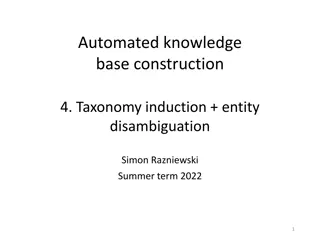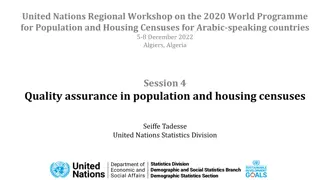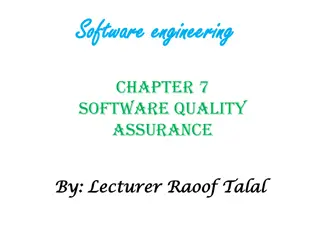Quality Assurance Taxonomy for Online Education
This presentation at the Quality Matters 7th Annual Conference 2015 discusses a new quality taxonomy for online education, focusing on specific QA measures and dimensions for high-quality online higher education programs. The session aims to address the shortage of QA measures tailored to the unique needs of online learning, emphasizing key dimensions such as instructional design, faculty support, and stakeholder perceptions.
Download Presentation

Please find below an Image/Link to download the presentation.
The content on the website is provided AS IS for your information and personal use only. It may not be sold, licensed, or shared on other websites without obtaining consent from the author.If you encounter any issues during the download, it is possible that the publisher has removed the file from their server.
You are allowed to download the files provided on this website for personal or commercial use, subject to the condition that they are used lawfully. All files are the property of their respective owners.
The content on the website is provided AS IS for your information and personal use only. It may not be sold, licensed, or shared on other websites without obtaining consent from the author.
E N D
Presentation Transcript
Quality Matters 7th Annual Conference 2015 A Quality Assurance Taxonomy for Online Education: A New Criticality Measure Monday 2NDNovember, 2015 1:30 2:20 pm Genevieve Boucaud, PhD boucaudg@usc.edu.tt
Objectives of the Presentation 1. Describe a new quality taxonomy for online education 2. Explain how the categorization system of the taxonomy works 3. State how the taxonomy can be used in specific contexts
Problem and Significance The shortage of specific quality assurance (QA) measures that focus on the distinct needs of parochial system. Growth in Online Learning Accountability Issues Accreditation Identify QA Measures Identify Key QA Dimensions Build a Quality Taxonomy
Problem and Significance Philosophical Philosophy of Education Theoretical Internal Characterization of Quality Practical Facilitate Development of QA Measures (Quality Taxonomy) Collaboration Knowledge Capital; Stakeholder Buy-in
Questions What measure can we use to assess quality in AOHE programs? 1. What is the nature of QA measures that currently exist in online higher education? 2. What are key QA dimensions for AOHE? 3. What meaningful taxonomy, for quality can be derived from the key QA dimensions for AOHE?
Methodology Research Design: Delphi Survey Rationale Scarcity; Small Sample; Methodological Fit; Collaboration Sample Source Stakeholders Upper Level Administrators Program Directors Faculty Students
Findings Twelve (12) Dimensions 1. Institutional Commitment, Support, and Leadership; 2. Instructional Design and Delivery; 3. Faculty Support, Training, and Qualifications; 4. Student Support; 5. Infrastructure; 6. Stakeholder Perceptions;
Findings Twelve (12) Dimensions 7. 8. 9. 10. Program Design; 11. Administration; and 12. The Integration of Faith and Learning (IFL) Institutional Mission; Curriculum Design and Review; Course Design and Development;
Findings Eight (8) Themes 1.QA dimensions are shared by traditional and online education. Align with Institutional Mission Curriculum Design and Review Course Design and Development Program Design Administration The Integration of Faith and Learning (IFL) 2.Online dimensions differ from face-to- face dimensions in terms of their intentionality and criticality.
Findings Eight (8) Themes 3. There are five dimensions that are most notably critical to online education. Institutional Commitment, Support, and Leadership Instructional Design and Delivery Faculty Support, Training, and Qualifications Student Support Infrastructure 4. The increased criticality of the five dimensions is the result of the time-space distance introduced by online learning.
Findings Eight (8) Themes 5. A systems approach is vital to online quality. 6. The extent to which quality measures are applied will determine core competency. 7. It is essential to balance stakeholder needs in determining extent. 8. The integration of faith and learning dimension pervades all the other dimensions.
Conclusions QA Must be Aligned to Philosophy No Need for New Dimensionality Collaboration is Vital Increased Intentionality and a Systems Approach are Necessary
Recommendations Stakeholders 1. Identify a regulatory body to oversee QA 2. Develop QA documents based on taxonomy 3. Set base criteria before beginning new programs 4. Engage in inter-HEI collaboration 5. Join online education communities outside system
Summary and Discussion 1. Describe a new quality taxonomy for online education 2. Explain how the categorization system of the taxonomy works 3. State how the taxonomy can be implemented in specific contexts
